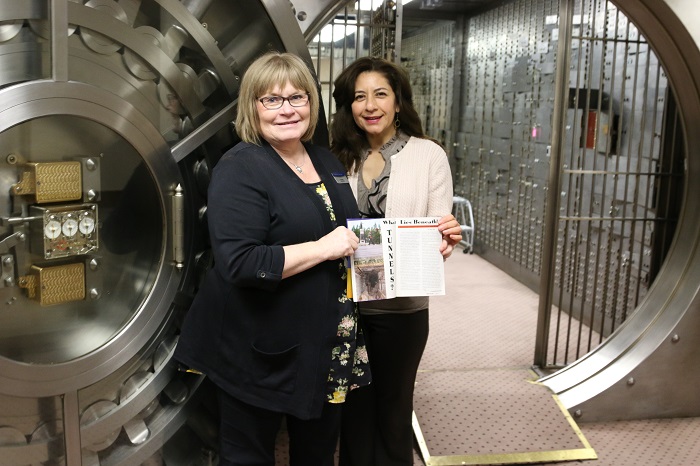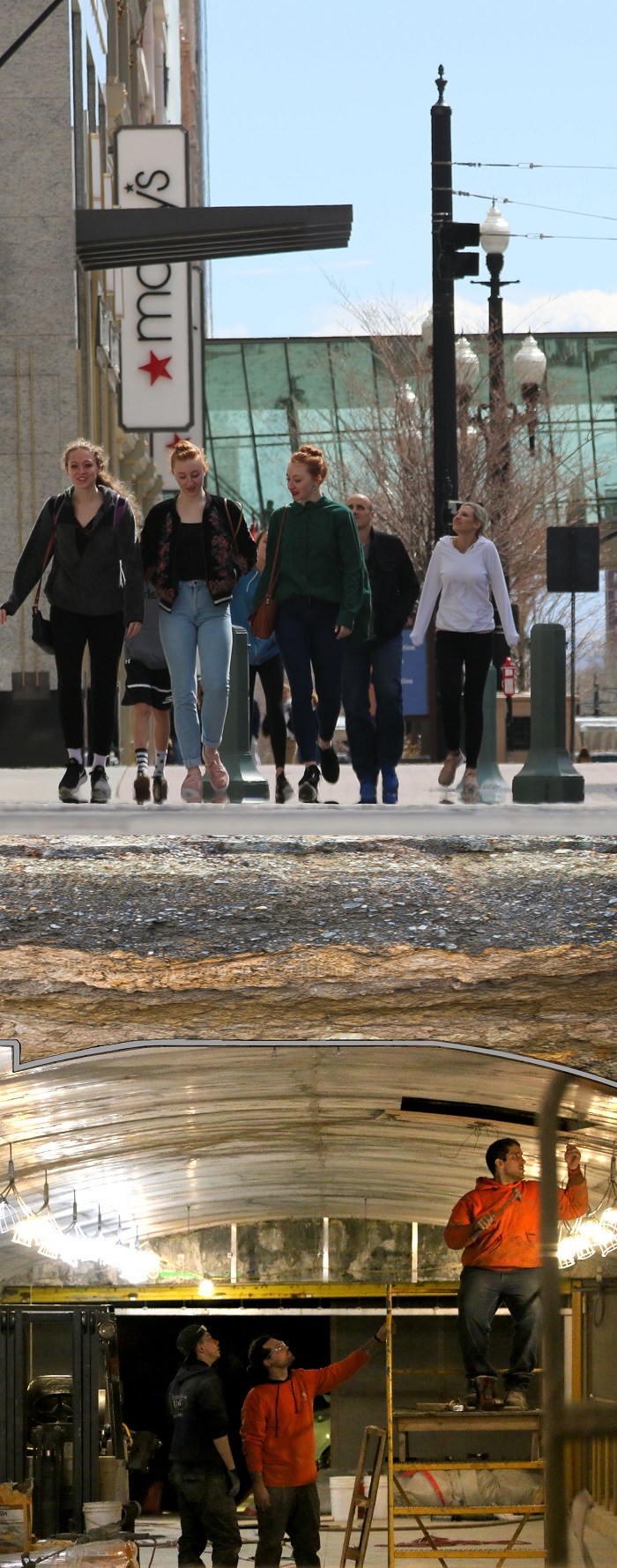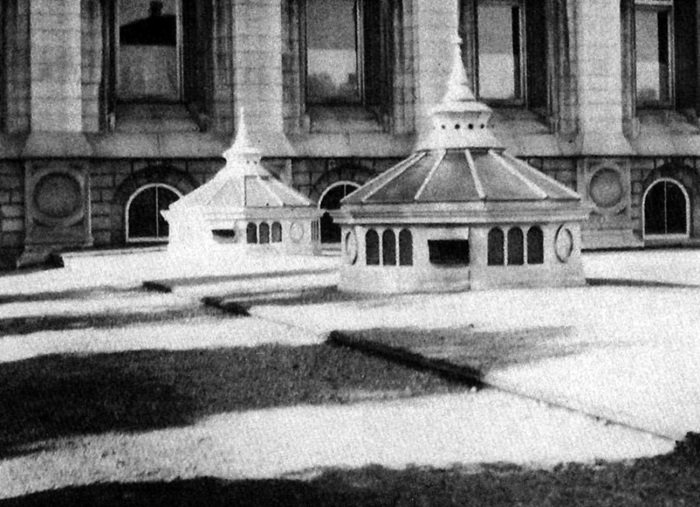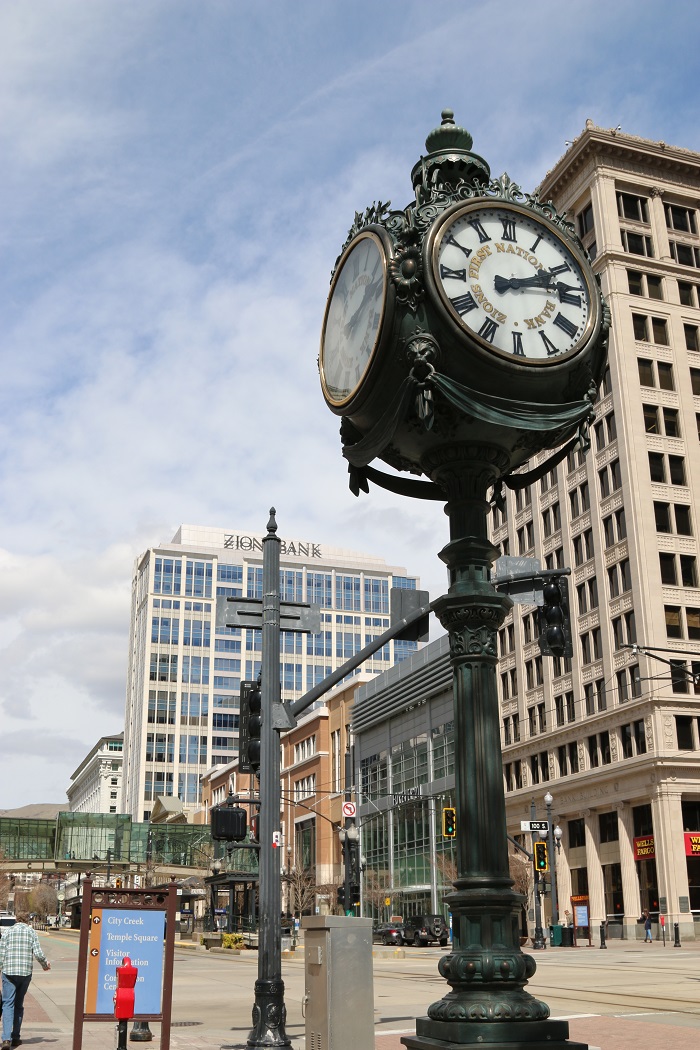
Tunnels conjure images of dark, dank spaces where mystery and danger lurk around every corner. Combine this preconception with a religion notorious for its secrecy and rituals and you’ve got a juicy recipe for conspiracy.
After hearing countless rumors of a “secret” set of tunnels that fan out all over the Salt Lake Valley from Temple Square, we did a bit of digging to try and separate the facts of Salt Lake’s underground from the fiction of myth and legend. Here are a few things we were able to find out:
 Most major cities have an underground network of tunnels—especially cities that are more than a century or two old. Salt Lake City is no different. Basic physics require that most major buildings extend well below the street level. If a connection is sought between two buildings, generally a tunnel is the easiest way to do this. Shelter, security and privacy are guaranteed.
Most major cities have an underground network of tunnels—especially cities that are more than a century or two old. Salt Lake City is no different. Basic physics require that most major buildings extend well below the street level. If a connection is sought between two buildings, generally a tunnel is the easiest way to do this. Shelter, security and privacy are guaranteed.
These are practical qualities that any business or organizations might desire, but should the two buildings happen to be the corporate headquarters for the LDS Church and the closed-to-the-public Salt Lake Temple, the stories surrounding these very real tunnels told by those both inside and outside the faith are now as a common as they are imaginative.

Underneath the Mormon Temple in Downtown Salt Lake City, a series of tunnels spreads out in all directions. The earliest written mention of this is in 1889 by John Nuttall as he writes in his diary about a tunnel connecting the temple and the annex building next door. The tunnels were built to enable LDS officials to walk back and forth from their offices to the temple without walking through the public or the weather.
The next mention of the tunnels in the media was highly controversial. In 1911, a 21-year-old Prussian convert named Gisbert Bossard gained access to the Temple and took 68 pictures of every “nook and cranny” of the interior. The initial intentions of his actions is unclear but what is known is that he tried to sell the photos, host his own show exhibiting the photos, and finally extort money from the church for the photos. The church quickly replied by publishing their own photos to steal Bossard’s thunder. The big question was how he had gained access?
Befriending a gardener in charge of maintaining the flowers inside the temple gave Bossard the access he needed. Bossard explained, “There is a tunnel that runs to the Sharon Building and the Hotel Utah… We found a spot on the temple grounds where we could lift up an iron cover, drop down into the tunnel and there be perfectly safe.”
Bossard’s odyssey didn’t quite turn out the way he had planned, but this left the public with clear confirmation of tunnels under the temple and a sense of intrigue and mystery that has yet to subside.
Some of the tunnels are open to temple patrons. Many Mormons have walked the tunnels en route to baptisms, weddings, etc. Most describe them as wide, well-lit, ventilated, comfortably heated, carpeted, and boring. The photo below shows the interior of the annex to a temple tunnel. Note the skylights in the ceiling and on Temple grounds.
In the book, Salt Lake City Underfoot, Mark Angus writes:
“Between the Assembly Hall and Tabernacle [on Temple Square], against the west wall, is the Nauvoo Bell. Restrooms are located to the south of the bell, behind the Assembly Hall. North of the bell, just past the Tabernacle, is an entrance to underground tunnels where LDS security offices are located and church leaders are provided safe passage among downtown buildings.”
Surely the tunnels have expanded as time and construction went on. Rumors mention tunnels to the ZCMI center, the new conference enter, the genealogical center, and the city-county building. Utah Stories contacted the church to tour some of these tunnels, but the church maintains it’s silence and, “doesn’t contribute to this story.”
Tunnels also emanate from the City/County Building on Washington Square. The most famous is a tunnel between the city library and the City/County Building. The site of the current library is where the Salt Lake jail used to be, and its tunnel was used to transport prisoners between the buildings. According to the old-timer who showed me the tunnels, Ted Bundy was the last prisoner to walk the tunnel. The original tunnel has been mostly blocked off since the building was earthquake proofed back in the nineties. The new tunnel exists mostly to connect utilities.
 One of the earliest usages of tunnels in downtown was to power a public clock that has rested on Main Street and 100 South for well over a century. The clock was installed years before electricity was available. The enormous size of the clock probably would have required someone to wind the clock daily.
One of the earliest usages of tunnels in downtown was to power a public clock that has rested on Main Street and 100 South for well over a century. The clock was installed years before electricity was available. The enormous size of the clock probably would have required someone to wind the clock daily.
To prevent this manual labor, the pioneers and the clockmaker came up with an ingenious method to use an underground water mill to power the clock without manual intervention. How they managed to regulate a consistent timekeeping device with inconsistent water flow is uncertain, but the waterwheel likely compressed a spring, with the spring providing the power as it decompressed, thereby turning the cogs.
This tunnel under old clock corner was rediscovered in 1978 during a downtown beautification project. Zions Bank on 100 South has a plaque in their basement regarding this history. Zions took Utah Stories on a tour of the tunnel near their vaults. A tunnel near vaults … sounds like the beginning of another story.
Digging Deeper
After publishing a story on Salt Lake’s underground 7 and a half years ago, there is still not much to be found on this secretive subject.
We did find one Deseret News article from March of 1989, by Elaine Jarvik. It references several tunnels under the streets of Salt Lake including steam tunnels, utility tunnels, underground canals carrying water from the canyons to the city, and sewers. In addition to that, she says, “There is a tunnel, for example, between the Church Office Building and the Salt Lake Temple, and another one under 200 East, between the City and County Building and the Metropolitan Hall of Justice. When there were still courtrooms in the City and County building, prisoners were transported through this tunnel, but the tunnel’s main function has always been to transport steam.” (deseretnews.com/article/36927/BELOW-THE-STREET.html)
We also reached out to the Facebook community, If You Grew Up in Salt Lake, Then You Will Remember This and they had a lot to say:
Hart Wesemann: Many years ago I would work on the gas meters down in the dungeons of many of the old downtown buildings. I saw the tunnels in several places. Some of them were sealed off and some of them went off into the darkness and I don’t know where they ended up.
Robert A Jones: These aren’t utility tunnels. They’re completely tiled and lit for VIPs to scoot around town unseen, mostly under church property. I was in them back in the ‘90s.
Tom Tolman: I understand that most of Temple Square, the Church Office Building and Conference Center have many tunnels going from one location to the other, but they have very limited access…mostly for church authorities and or church maintenance personnel. I’ve been from 47 East South Temple building to the basement of the temple. No published information, however.
Syd Wayman {Shhhhh ;) }: We used to hang out in the tunnels underneath Highland High School. I have no idea how we got access or who figured it out, but it was through a door past the new-at-the-time gym.
Gary Andrus: There is a tunnel from S.L. Regional Hospital (formerly Holy Cross Hospital) that runs to the building on the northwest corner of the block. That building was housing for the nuns and later a nursing school, I believe.
Dan Holland: I worked in the tunnels, waterproofing them with coal tar pitch in the 70’s. I remember one arm going from Temple Square to Zion’s Bank and Hotel Utah.
Michelle Calvin Jorgensen: My dad told me when he was a teenager that he worked in the tunnel between the old Auerbach’s and The Paris.





